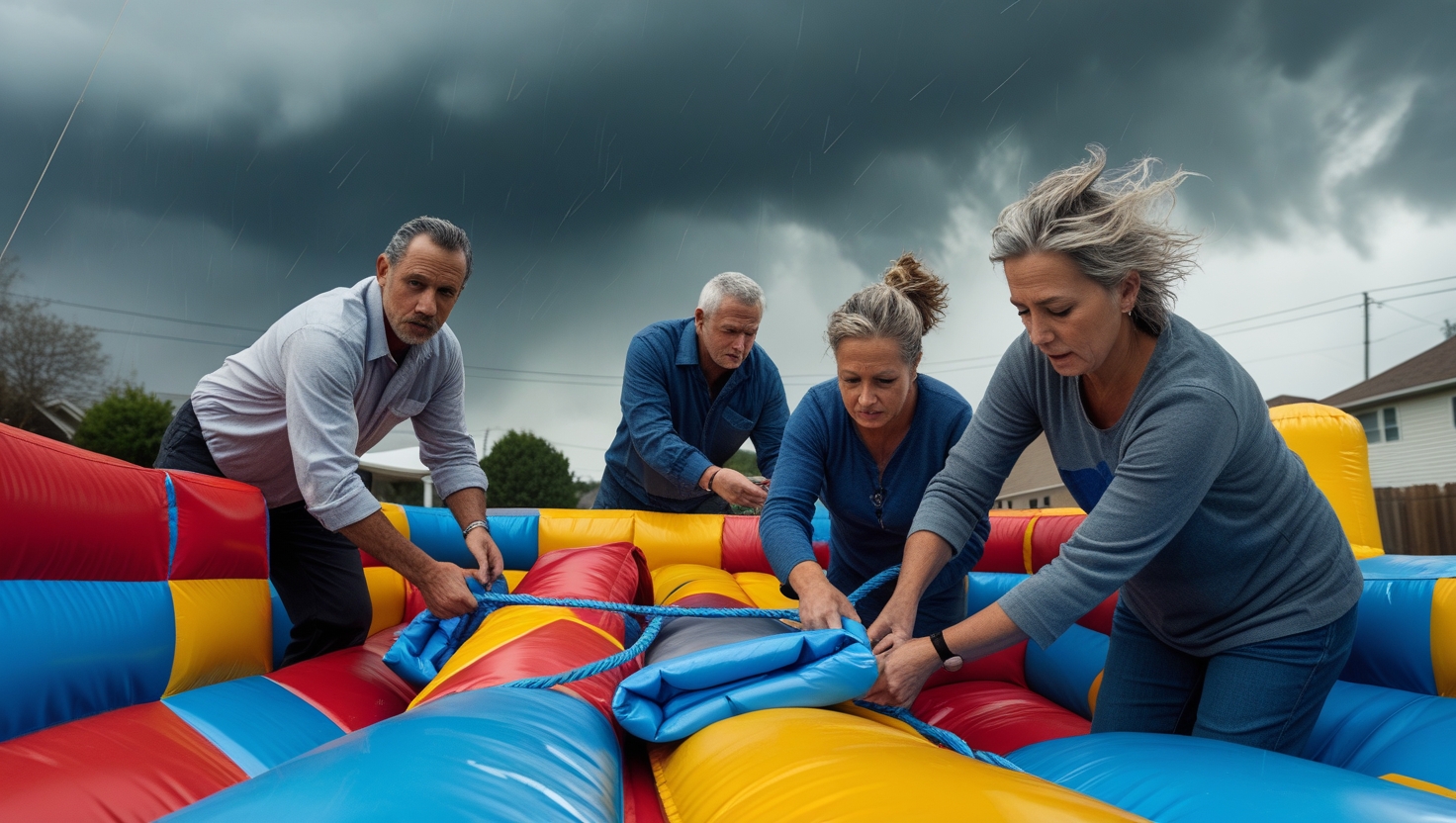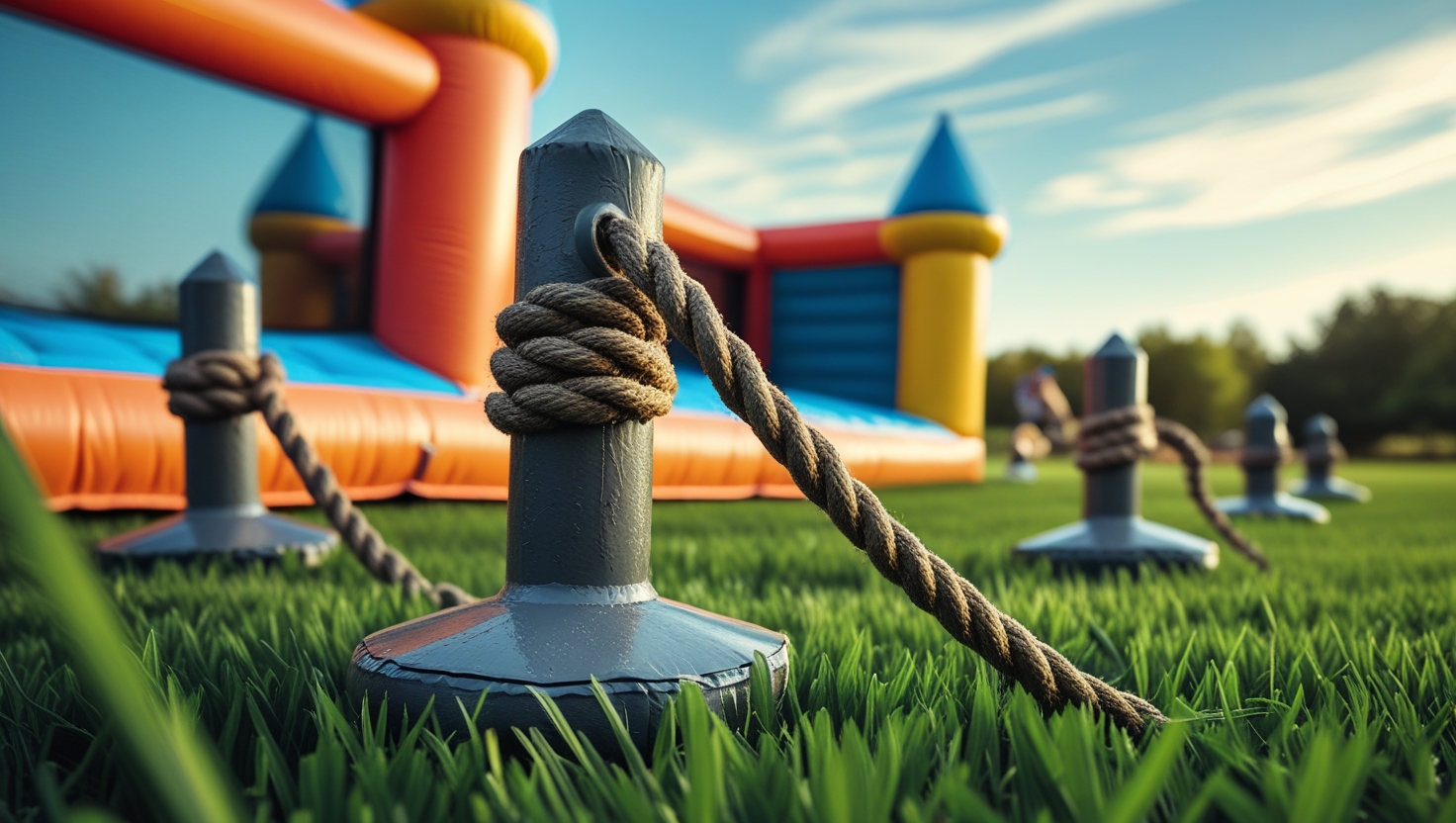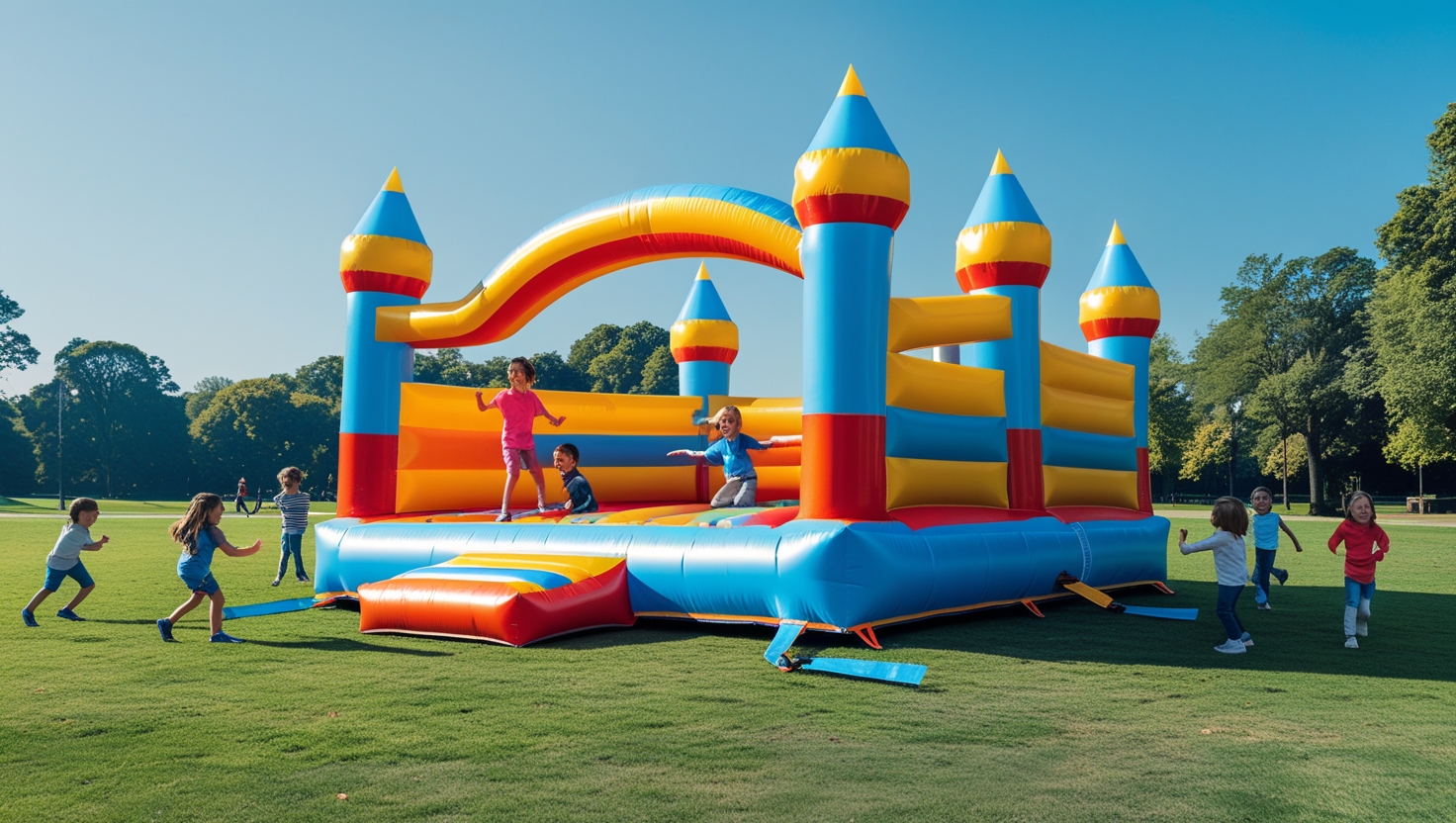
All you want to know about us
Click here to share this article

Bouncy castles, also known as inflatable castles or bounce houses, are a source of joy for children and a staple at parties, fairs, and events. However, safety concerns about these playful structures occasionally make headlines, raising an important question: can bouncy castles really fly away? In this article, we will explore the factors contributing to such incidents, how to prevent them, and best practices for ensuring a safe bouncing experience.

The Science Behind Bouncy Castles Flying Away
Bouncy castles are large inflatable structures that rely on constant airflow to maintain their shape and functionality. Despite their size and weight, they are relatively lightweight when compared to their expansive surface area, making them susceptible to strong winds.
Wind as a Major Factor
High winds exert significant force on the wide surfaces of a bouncy castle, potentially lifting it off the ground if it is not properly secured. The effects of wind can be particularly dangerous because:
Aerodynamic Shape: The inflated structure creates a large surface area, effectively acting like a giant sail.
Air Pressure: Constant airflow inside the castle maintains internal pressure but offers no counter-resistance against external wind forces.
Low Weight: Even large models often weigh less than 100 kilograms, making them relatively easy to displace when subjected to strong gusts.
Anchor Points and Stability
Proper anchoring is essential for keeping bouncy castles secure during operation. Typically, manufacturers provide guidelines for:
Number of Anchors: Most models require at least six to eight anchor points.
Anchor Materials: Heavy-duty stakes or sandbags are commonly used.
Ground Surface: Anchors are more effective on grass or soft soil compared to hard surfaces like concrete.

Documented Incidents and Their Causes
Several cases have demonstrated the risks associated with improperly secured or poorly supervised bouncy castles.
Severe Wind Events: Some incidents occurred during unexpected wind gusts, sometimes exceeding safe operational limits.
Inadequate Anchoring: In other cases, anchor points were insufficient or improperly installed, failing to hold the structure in place.
Neglecting Weather Warnings: Operating inflatables during adverse weather conditions has led to accidents.
These factors underscore the importance of rigorous safety protocols and vigilance during setup and use.

Preventive Measures for Safe Use
Ensuring that bouncy castles do not pose a safety hazard requires adherence to stringent preventive measures.
1. Weather Monitoring
Regularly check local weather forecasts and pay attention to wind speed warnings. Industry safety standards generally recommend:
Maximum Wind Speed: Discontinue use if winds exceed 20-25 km/h (12-15 mph).
Real-Time Monitoring: Use handheld anemometers to measure on-site wind speeds.
2. Proper Anchoring Techniques
Follow manufacturer guidelines for anchoring, ensuring that:
Anchor Stakes: Stakes are driven at least 30-40 cm (12-16 inches) deep into the ground.
Sandbags: On hard surfaces, use heavy sandbags to secure each anchor point.
Tensioning: Properly tension all ropes and straps to minimize movement.
3. Supervision and Maintenance
Qualified adult supervision is critical during operation.
Trained Supervisors: Ensure attendants are familiar with operational and emergency procedures.
Regular Inspections: Check for wear and tear, punctures, or compromised anchor points before and during use.
Immediate Deflation: Be prepared to deflate and secure the castle quickly in the event of deteriorating weather conditions.

Best Practices for Event Organizers and Parents
Both event organizers and parents play a key role in promoting safe bouncy castle experiences.
For Event Organizers:
Choose Reputable Suppliers: Partner with rental companies that prioritize safety and maintenance.
Site Assessment: Evaluate the event location for wind exposure and ground suitability.
Emergency Plans: Develop clear protocols for adverse weather and other emergencies.
For Parents:
Ask Questions: Inquire about the setup, anchoring methods, and weather monitoring procedures.
Supervise Children: Ensure proper behavior inside the castle to prevent accidents.
Limit Use: Restrict bouncing activities when wind speeds increase or weather conditions deteriorate.

Conclusion
While bouncy castles provide endless fun, their potential to become airborne in strong winds underscores the importance of proper setup, anchoring, and supervision. By following best practices and remaining vigilant, we can ensure a safe and enjoyable experience for all participants.
undefined
undefined
undefined
undefined
undefined
undefined
undefined
undefined
undefined
undefined
By: